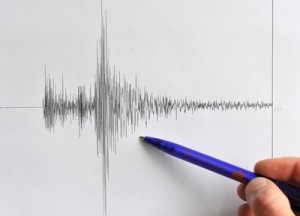ENSI issues directives for the EU Stress Test
On Wednesday evening, the Swiss Federal Nuclear Safety Inspectorate, ENSI issued directives on the EU Stress Test to operators of nuclear power plants in Switzerland. This is the 4th directive to be issued by ENSI since the accident in Fukushima.
 Brugg – Following the accident at the Fukushima nuclear power plant, the European Council decided on 25 March to review the safety of all 143 nuclear power plants in the EU in the light of what had happened in Japan. The review will take the form of a new and transparent safety evaluation – a Stress Test. The scope of the Stress Test, including its methodology was drawn up by the nuclear regulators in EU member states. It was approved by the European Commission on 25 May 2011. The specification for the Stress Test requires operators of nuclear power plants to submit specific analyses and evaluations. Following a review, they will be incorporated into a report for each country.
Brugg – Following the accident at the Fukushima nuclear power plant, the European Council decided on 25 March to review the safety of all 143 nuclear power plants in the EU in the light of what had happened in Japan. The review will take the form of a new and transparent safety evaluation – a Stress Test. The scope of the Stress Test, including its methodology was drawn up by the nuclear regulators in EU member states. It was approved by the European Commission on 25 May 2011. The specification for the Stress Test requires operators of nuclear power plants to submit specific analyses and evaluations. Following a review, they will be incorporated into a report for each country.
Focus on three scenarios
The EU Stress Test must be completed for each location with a nuclear power plant. It will focus on the following three scenarios:
- the extreme natural events that played a role at Fukushima, i.e. earthquakes and flooding of any type,
- effect of loss of power and cooling water supply: irrespective of the trigger, the test will investigate scenarios such as the sustained loss of power for considerable periods and examine the resultant effects,
- effectiveness of emergency safety measures: The tests will consider a range of serious accidents and assume that several safety systems and barriers have also failed. It will then look at what countermeasures exist.
For each of the three scenarios, operators are required to relate their comments to the current design. In addition, they must comment explicitly on safety margins (i.e. margins in excess of design). The reference date for the evaluation is 30 June 2011 (design and operation of plant on that date).
For security reasons, accident scenarios following a terrorist attack cannot be handled in the same transparent way. They will be reviewed in Phase 2, which will be conducted by a special working group consisting of representatives from relevant bodies in the individual country. The European Council will specify the mandate and methodology to be used by this group.
Timetable for EU Stress Test
The timetable for the EU Stress Tests is identical for each country and runs from 1 June 2011. The timetable in Switzerland is as follows: each operator must submit its analysis of the three scenarios to ENSI by 31 October 2011. ENSI will evaluate the analyses and compile a national report for Switzerland by the end of 2011. This is followed by the EU Peer Review and the final results should be ready for the June 2012 meeting of the EU Council. The peer review process is currently the subject of international negotiation.
Swiss and EU Tests are complementary
The reviews required under the EU Stress Tests will run in tandem with the review already started in Switzerland.
Unlike most other countries in Europe, Switzerland has already re-evaluated earthquake and flood risks on the basis of recent scientific findings. On 18 March 2011, ENSI ordered a review using current data of the following three scenarios: earthquake, floods and a combination of earthquake and earthquake-induced flooding. This data will go beyond the scope of the EU Stress Tests.
For other scenarios, e.g. the sustained loss of power supply and a detailed assessment of emergency measures if external conditions are extremely difficult – such as after a severe earthquake – the current EU Stress Test will supplement the current investigations by ENSI.

